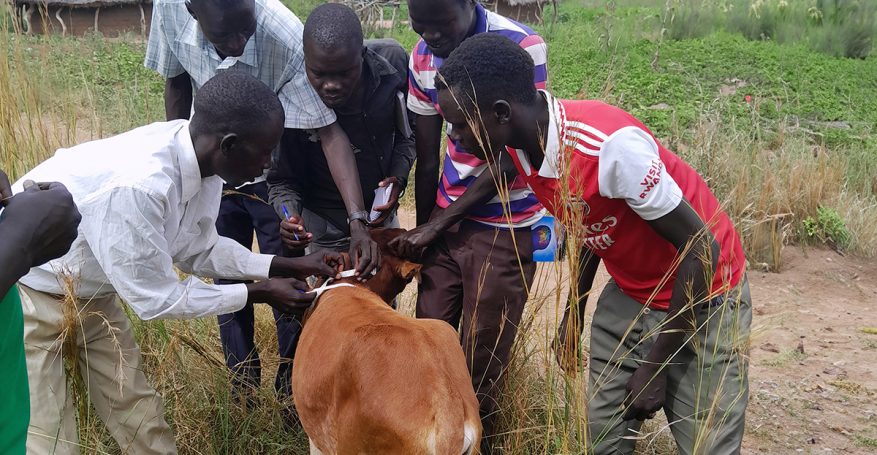In the heart of Napak, Uganda, livestock is not just a way of life—it’s a lifeline. For the people here, particularly the Karamojong, cattle represent wealth, pride, and tradition. In Napak, a herd of cattle is more than just an economic asset. It’s a symbol of success, deeply intertwined with identity. Here, conversations about livestock reveal an undeniable affection. Cattle are revered as more valuable than money itself. This deep connection underscores the critical role that healthy livestock plays in the livelihoods of these communities.
However for a long time, rural areas in Napak faced a shortage of veterinary health workers. Families depended on their animals for survival. But when disease struck, they were often left helpless. To bridge this gap, the Community Animal Health Workers (CAHWs) programme was established. These animal health workers were chosen by their communities and trained to care for the livestock they all cherished.
Despite the importance of the CAHWs, the programme struggled over time. The last formal training occurred more than a decade ago. Many CAHWs left or stopped practicing, leaving the community vulnerable.
This is where the Building Livelihood and Resilience in Napak – BUILD – project, led by Self Help Africa and funded by the Community Foundation Ireland, stepped in. With a focus on revitalising livestock care, the project identified and trained 24 new CAHWs to ensure continued animal care in Napak. To strengthen their ability to sustain themselves and the services they provide, the project also trained the CAHWs in business skills, enabling them to manage their activities profitably and ensuring the sustainability of their vital work.
These dedicated individuals have since become the cornerstone of livestock health in Napak. The animal care workers provide essential services such as disease surveillance, treatment, de-worming, and vaccination, all under the supervision of District Veterinary Officers. Their work has brought hope to the community. In a short amount of time, they have treated 763 animals—cattle, sheep, goats, and even pig. In the process, the CAHWs have earned not just income but the gratitude of their neighbours.
In July 2024, when disease threatened to decimate herds, the CAHWs stepped up. Partnering with the District Veterinary Office and using vaccines provided by the Ministry of Agriculture, Animal Industry, and Fisheries (MAAIF), they vaccinated over 7,000 animals against Foot and Mouth Disease (FMD) and rabies. Their swift action protected the livestock and the families who depend on them.
The BUILD project has revitalised the CAHW system in Napak, playing a crucial role in sustaining livelihoods. The CAHWs’ work ensures that the traditions and resilience of Napak remain strong, even in challenging times.

